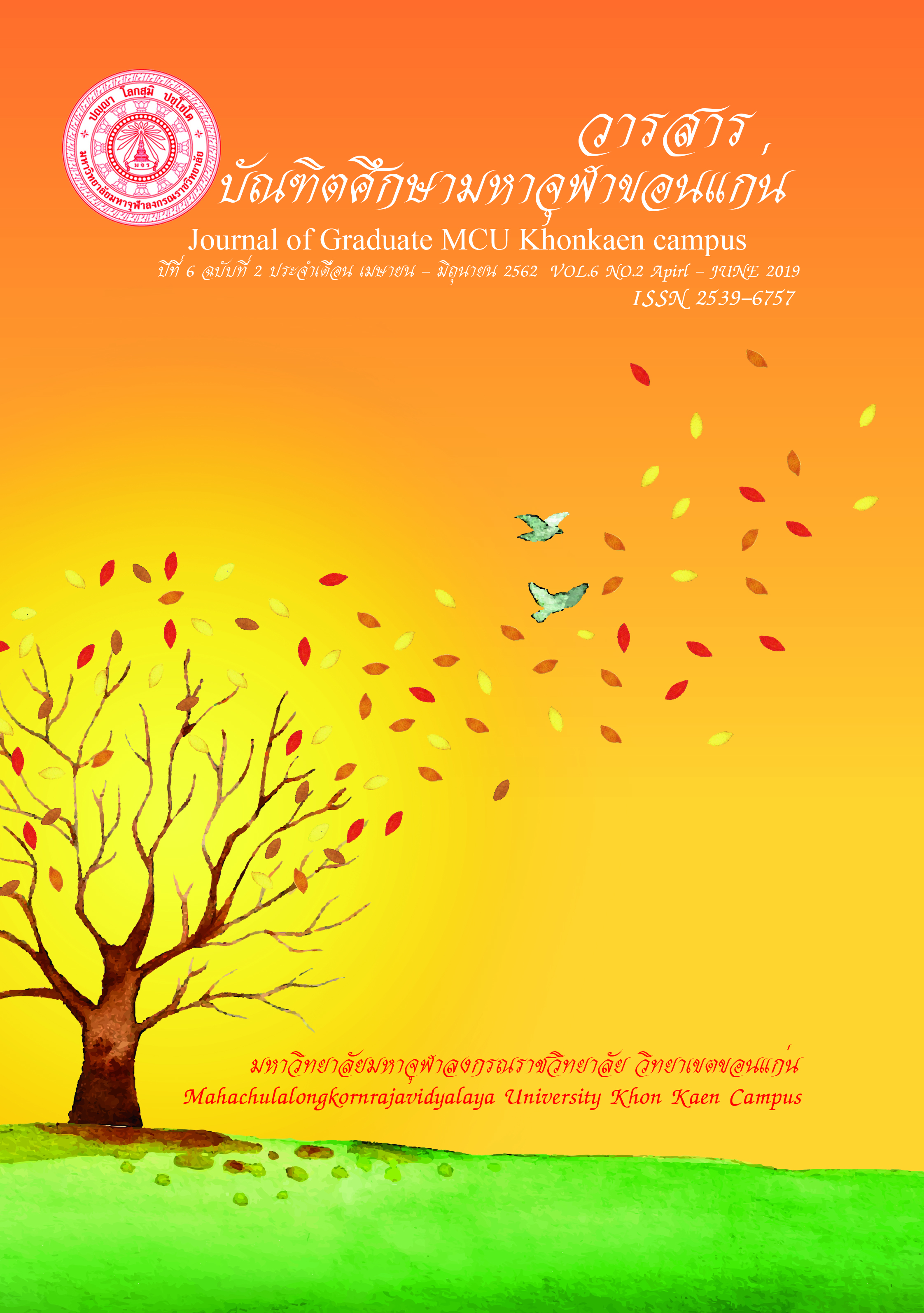SociaL Studies Teaching Strategiesfor Development of Innovative LearningManagement in the Buddhist Way
Main Article Content
Abstract
The strategy is to determine how to conduct an integrated plan incorporating a step. Actions to achieve compliance with the procedures established by the analysis of strengths, weaknesses, opportunities and threats of its own. Plan to be consistent with the environment as it leads to future success. The learning in the 21st century, the need for strategic planning in the process of learning to comply with the environmental conditions that occur in the context of each particular area. The process of learning social studies Religion and Culture The strategy consists of 8 linked to brain development and inserted into a skill this led to the development of innovative learning. Developing innovative learning management, including identifying the problem set the objective study limitations invented innovation trial, publishing. This innovative feature is that teaching is a new teaching all about It is a new part. What is new is still in the experimental process. It is something new that has been recognized and applied some are still prevalent. And it is the usual practice on one occasion. This article aims to present the development of innovative forms. Techniques and methods of teaching, including teaching Buddhist way integration with learning management, social studies, religion and culture is 9 format is 1) Method of teaching metaphors
2) Method of teachingpucchawisạchna 3) Method of teachingdrammasakajja 4) Method of teaching Ariyasạc 4 5) Method of teaching investigate6)Method of teachingtịrsikkha 7) Method of teaching Benchachanta 8) Method of teaching the ṣrạthṭhalaeayonisomnsikarlaea. And 9) Method of teaching Phahusuta to be effective in learning more the result will be a learning experience.
Article Details
References
document Strategic Management in Public Sector, Volume 1.
Nonthaburi: SukhothaiThammathirat Open University.
Ministry of Education. (2008). Core Curriculum Basic Education 2008.
Bangkok: Cooperative Rallies of Thailand Limited.
Pairoj Piyawongwattana. (2002). Strategic Management. Bangkok:
Chulalongkorn University.
Pichit Rritjaroon. (2007). Types of innovation in teaching and learning.
Online. Retrieved September 30, 2018. from:
http://www.ipesp.ac.th/learning/technology/html/shap%201/bot1-
7.html
Somchai Pakkaswiwat. (2001). Strategic Management. (5
th ed.). Bangkok:
Amarin.
Salee Thongthiw. (2002). Publication of educational innovations for
administrators And teachers of the education reform era. Bangkok:
Chulalongkorn University.
Tisana Khammani. (2005).Teaching Patterns: Multiple Choice. Bangkok:
Chulalongkorn University.
Uthai Vorametheesrisakul, et al. (2018). Buddhist teaching methods.
Journal of Graduate MCU KhonKaen Campus, 5(1), 71-81.
Wattana Wongkietrat, et al. (2005). Strategic Planning for Art. Excellence.
Bangkok: Inno Giant.
Wicarṇ Phaṇich.(2012). Criteria for learning in the 21st century. Bangkok:
Saritwongfoundation.

